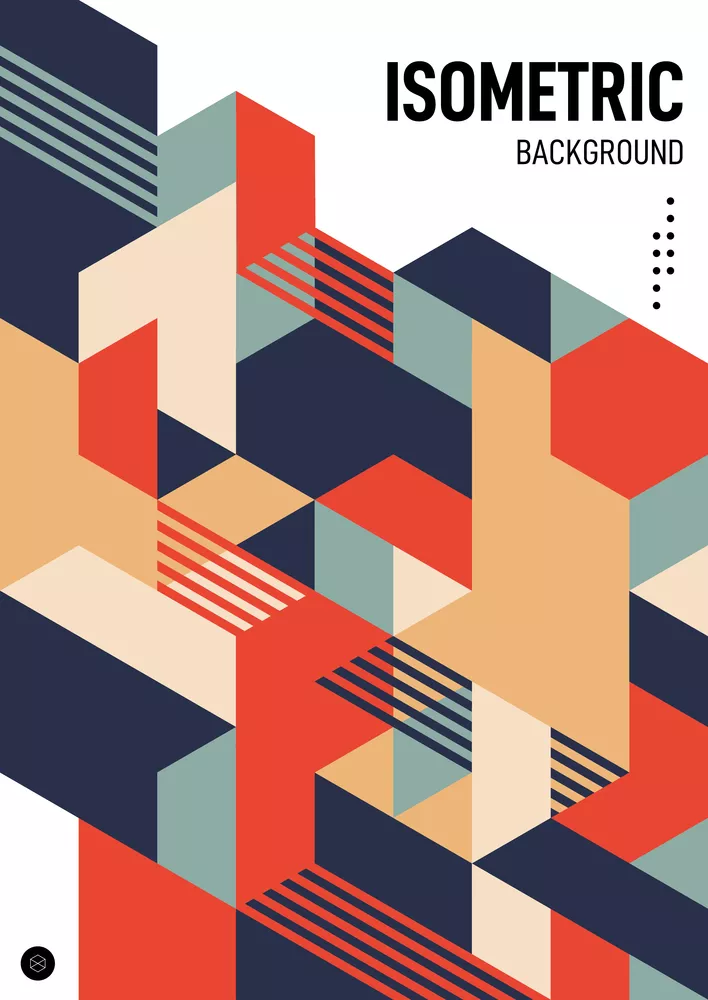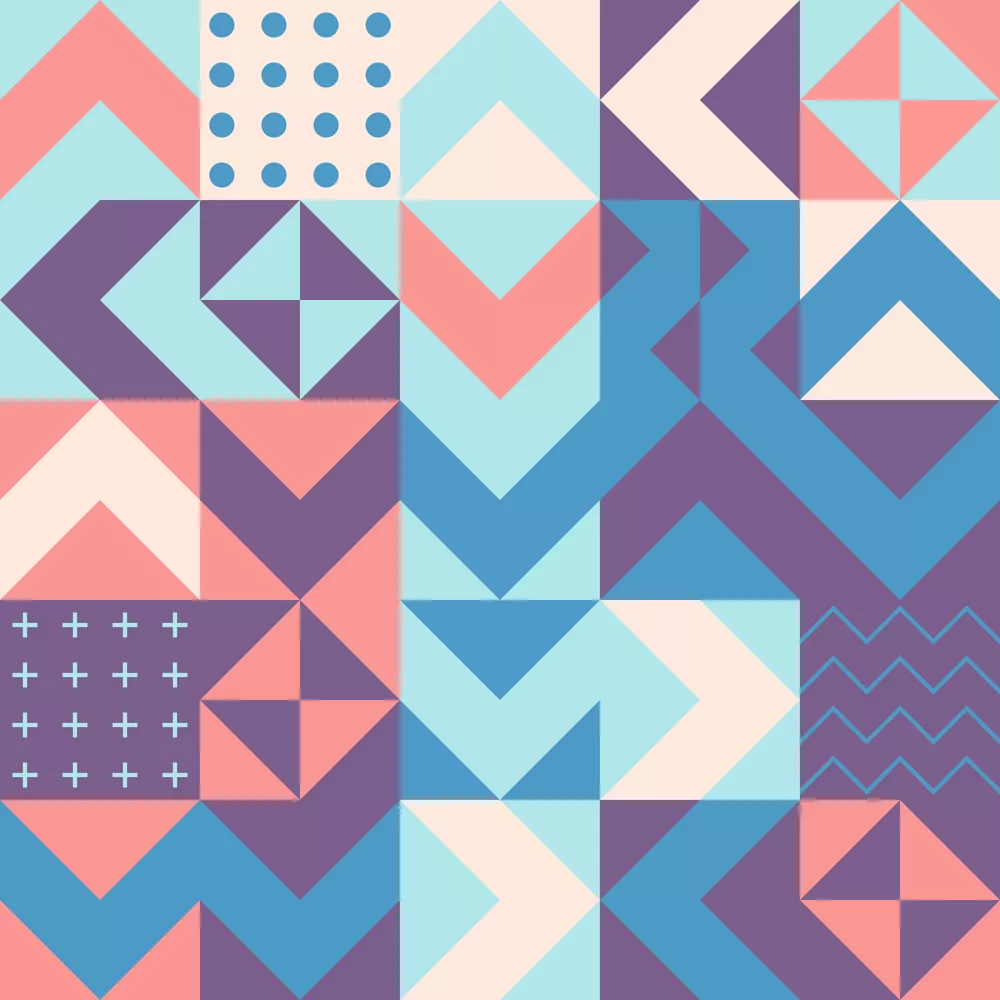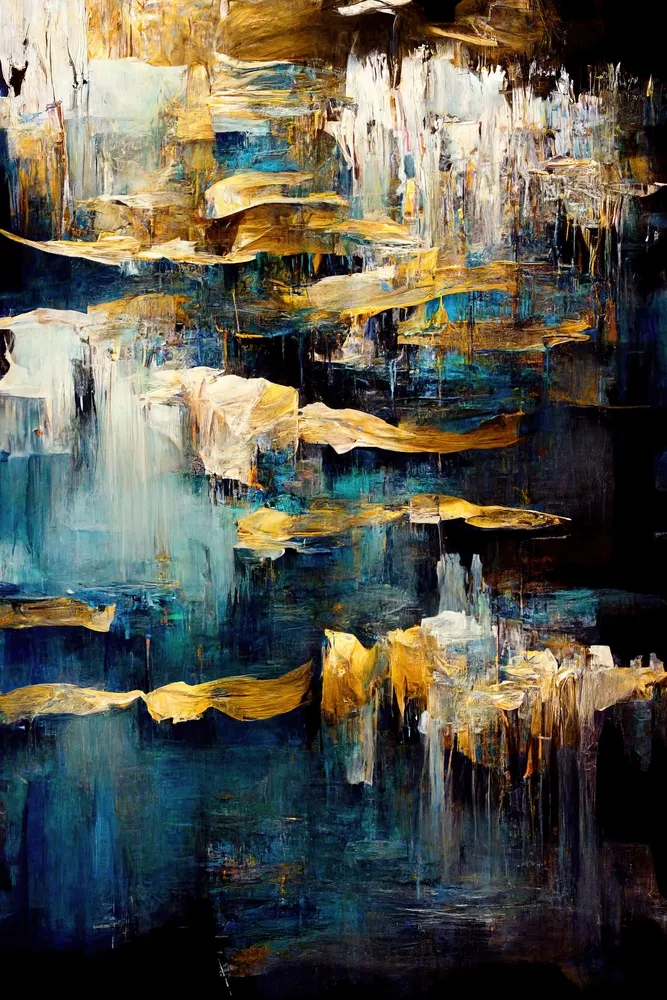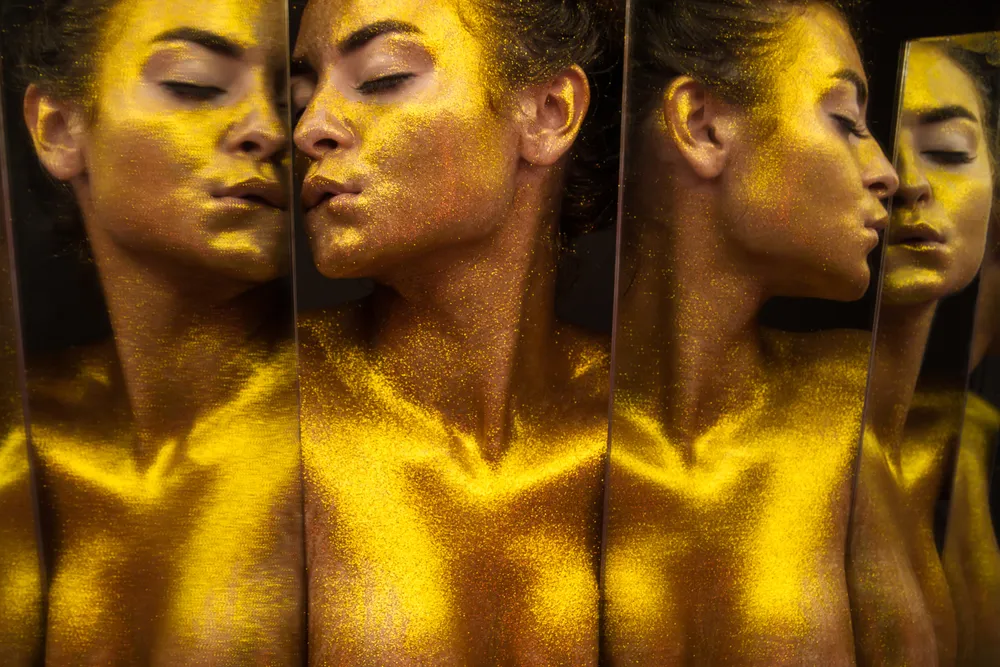7 Abstract Types of Art with Thematic Images and Inspiring Examples
Abstract art evokes a whole range of emotions, from sincere admiration to a smile. Some love it, some don’t understand it, and others disregard it. Despite the differences in perception, this movement remains one of the main sources of inspiration for creators.
We’re inviting you to explore the main types of abstract art to see how diverse it is. In addition to the features of different abstractionism movements and examples of the most famous works, we have also complemented this article with a collection of abstract works by Depositphotos authors, which can be perfect finds for your design projects.
Download Themed ImagesWhat is abstract art?
Abstract art (also known as abstractionism, non-objective, or non-figurative art) is an avant-garde movement that emerged in the early 20th century in several European countries. But what does abstract art mean exactly? Its key feature is a departure from an accurate representation of reality. Unlike representational art, which aims to reflect reality, abstractionism aims to evoke emotions, feelings, and associations. And the key elements of visual language, such as colors, shapes, and lines, help achieve this.
The main features of abstractionism are:
- representation of the world without reference to the visible reality;
- absence of recognizable objects;
- symbolic and metaphorical nature;
- emotionality and expressiveness;
- emphasis on shapes, colors, lines, and textures.
Abstract art paintings drove a real revolution in the art world and marked the beginning of a new era. This gave artists absolute freedom of expression. They were no longer limited to a small choice of subjects such as portraits, domestic scenes, and landscapes, and could depict literally anything, including thoughts and emotions. Although abstract art can be tricky to understand, it is as popular today as it was a century ago. See for yourself by browsing the huge selection of abstract images in our library.
Types of abstract art
Wassily Kandinsky, Kazimir Malevich, Piet Mondrian, František Kupka, and Robert Delaunay are considered the founders of the abstract art movement. They were practitioners and theorists of abstractionism and agreed that it was the highest level of fine art development. The artists believed that having been freed from copying the reality a creator thinks in terms of images of eternal spiritual entities. Despite having one unified creative manifesto, the representatives of this movement used different artistic approaches, giving birth to numerous types of abstract art.
1. Geometric abstraction
Iconic artists: Wassily Kandinsky, Kazimir Malevich, Piet Mondrian
As the name implies, geometric abstraction (also logical or intellectual abstraction) is based on the use of geometric shapes, planes, and straight and broken lines combined into non-objective compositions. It largely owes its appearance to Cubism. Inspired by Cézanne’s works and fascinated by the search for a “new reality”, Cubists were the first to experiment with the decomposition of all objects and shapes into geometric figures. Wassily Kandinsky, the founder of non-objective painting, was one of the first to use this approach in his abstract works. Kazimir Malevich (suprematism) and Piet Mondrian (neoplasticism) also actively developed it. In particular, the latter used vertical and horizontal lines to create harmony and rhythm.

Broadway Boogie Woogie by Piet Mondrian
Geometric abstractionism was very popular up to the end of World War II and had a significant impact on modern architecture, design, and art. It gained a second life in the 1960s with the emergence of minimalism and op art. Today, designers often turn to abstract geometric images for ideas of combining shapes and colors, which can inspire the creation of designs for identity, advertising bills, posters, or packaging.
2. Action Painting
Iconic artists: Jackson Pollock, Willem de Kooning, Franz Kline
Action painting is characterized by the use of chaotic strokes, dabs, and splashes of paint. This artistic style emphasizes the emotional nature of works. In fact, action painting is a spontaneous expression of the author’s inner world in a form not subject to logical thinking. In other words, it is subconscious creative work.
This style originated in the 1940s in the United States and was closely related to the abstract expressionism movement. The key feature of action painting is the creative process itself, not the result. Artists such as Jackson Pollock, Franz Kline, and Willem de Kooning considered paintings an arena of action and worked in an improvisational manner using large brushes. For example, Pollock used to put canvas on the floor and moved around splashing paint on it.

No. 5, 1948 by Jackson Pollock
Source: WikiArt
Action painting defined art as an action rather than an object, which in the future gave rise to many artistic movements, from happening to performance. It continues to inspire creators even today. Using chaotic images of brush strokes and splashes, you can add motion and life to your designs, including banners, posters, and print materials.
3. Color Field painting
Iconic artists: Mark Rothko, Barnett Newman, Clyfford Still
Color field painting is a type of abstract expressionism, whose representatives filled their canvases with large, even fragments of solid color. This style, inspired by European modernism, emerged in New York in the 1940s and 1950s. Unlike action painting, the main focus here is placed on the mood created by color rather than on brush strokes. The most prominent representatives of color field painting, including Mark Rothko, Barnett Newman, and Clifford Still, painted canvases seeking to evoke a contemplative or meditative response in viewers.
One of the most famous examples of color field painting can be seen in Mark Rothko’s ‘multiforms’ — paintings consisting of several color planes. The artist explained them as “the simple expression of the complex thought” and art critics saw them as the embodiment of basic human emotions.

Orange and Tan by Mark Rothko
Source: WikiArt
Color field painting greatly influenced artistic movements such as minimalism and post-painterly abstraction. Its features — a focus on color as the main means of artistic expression and exploring the relationship between color and space — still attract creators today. Creating a mood with the help of color and color blocking in Rothko’s style are the main creative techniques that modern designers can borrow from the representatives of this style.
4. Hard-edge painting
Iconic artists: Karl Benjamin, Helen Lundeberg, Lorser Feitelson
Hard-edge painting is one of the abstract styles of the late 1950s and 1960s related to post-painterly abstraction and color field painting. Various abstractionism types were developing at the same time and strongly influencing each other, which often blurred their boundaries. This is also true for hard-edge painting, which combines geometric abstraction’s clear composition with bright colors and bold forms of color field painting.
Initially, hard-edge painting was associated with California artists, but today, the term is used to describe one of the key trends in abstract painting in the United States in the 1960s. Paintings by the movement’s representatives are characterized by the use of contrasting colors and clear lines.

Yellow Landscape by Karl Benjamin
Source: WikiArt
A hard-edge painting looks like a perfect embodiment of the philosophy of abstractionism. It is all about color, shape, line, and their interaction. These characteristics made this movement the inspiration for minimalism, which is one of the most popular styles that modern designers turn to.
5. Lyrical abstraction
Iconic artists: Wols, Gérard Schneider, Arshile Gorky
Lyrical abstraction is a subtype of informalism, an artistic movement that emerged in the second half of the 1940s in Paris. It united various movements in abstract art, including Tashism and Art Brut. Sometimes, this term is also used as a synonym for abstract expressionism. Despite the difference in interpretations, the representatives of this movement were united by the desire to create a spontaneous painting style free from previous theories and modern conventions.
Since lyrical abstraction originated after World War II, when artists gained the opportunity to create again, they plunged into painterly expression, rejecting geometric abstraction, naturalism, and figurative genres. The main features of lyrical abstraction: an improvisation in performance and the expression of an artist’s emotional state. Works of this style are s stream of the artist’s consciousness embodied in color.

It’s All Over – The City by Wols
Source: WikiArt
To understand how difficult it is to distinguish between related artistic styles and movements, it is worth noting that informalism and the tashism it gave birth to are often called European versions of action painting and color field painting. But in any case, they were guided by the common idea that the spontaneity and emotionality of works are of prime importance.
6. Organic abstraction
Iconic artists: Joan Miró, Henry Spencer Moore, Georgia O’Keeffe
Organic (or biomorphic) abstraction refers to using abstract, rounded, flowing shapes and lines similar to those found in nature. This abstract art style was not a movement or a school, but rather an artistic approach that can be found in the works of numerous representatives of various movements, from sculptors Constantin Brancusi and Barbara Hepworth to painters Jean Arp and Joan Miró.
Organic abstraction philosophy is related to the ideas of the French philosopher Henri Bergson, who believed that natural evolutionary processes and artistic creativity have a common source. Sculptures in this style often resemble shells, pebbles, fragments of flowers, and other natural objects.

From the Lake by Georgia O’Keeffe
Source: WikiArt
Organic abstract art is a vivid example of how art can make its way outside of museums and private collections. It has had a powerful influence on various design areas, including industrial design, furniture, and interior design. Considering the calming effect of natural motifs, modern creatives also often turn to them in their projects. It’s a great way to engage audiences and offer them a unique experience no matter what you’re working on, from web design to identity.
7. Op Art
Iconic artists: Victor Vasarely, Bridget Riley, Henrique Matos
Op-art (or optical art) is an artistic movement that emerged in the 1960s–1970s due to the use of various optical illusions by artists. Works of this style are based on specifics of perception of flat and spatial shapes. They are usually made with a combination of black and white elements, creating the effect of movement. The founder of Op Art is Victor Vasarely, who was also a representative of geometric abstractionism and the Bauhaus school.
The goal of Op Art was to deceive the eye and make it see something that’s not really there. It appeals primarily to the audience’s perception rather than emotions. Looking at works in this style, a viewer seems to be solving a puzzle; their mind tries to put separate fragments together into one system. But in Op Art, the elements are arranged in a way that disorients the viewer and prevents them from seeing a holistic structure. This makes it seem like the works are moving, deforming, or that a hidden image is visible from a certain angle.
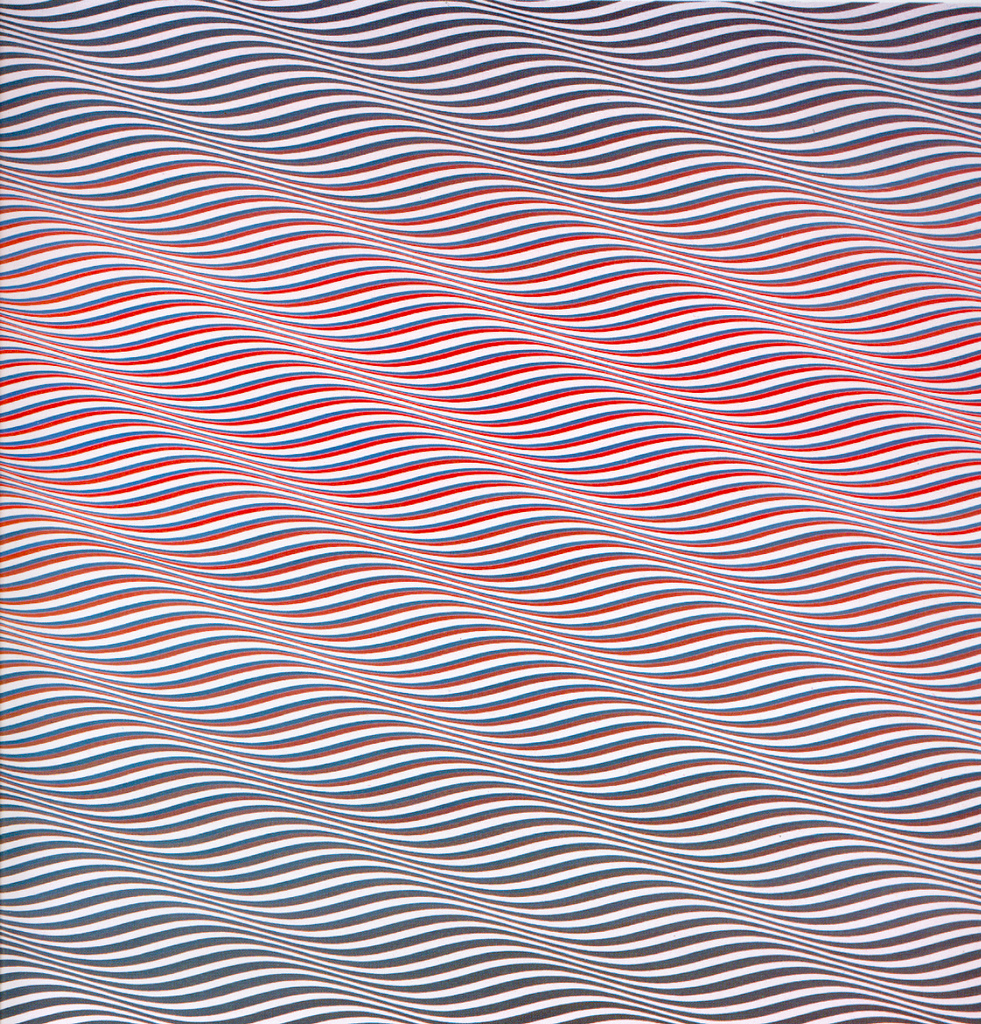
Cataract 3 by Bridget Riley
Source: WikiArt
Due to the effect Op Art had on perception, this type of abstractionism gained immense popularity in design and architecture, which led to the flourishing of optical art in advertising and graphic design. Interest in optical illusion art is still seen today. Works like this help creators capture their audience’s attention and provide them with a unique visual experience.
FAQ on abstract art
What makes art abstract?
Abstract art representatives don’t try to depict real-world objects; instead, they use shapes and colors to convey moods or ideas. Abstract art emerged as an opposition to Renaissance art, which was all about reproducing reality as accurately as possible. During the late 19th and early 20th centuries, the Impressionists challenged classical principles of art by focusing on the depiction of feelings, changing impressions, and experiences. They enabled and fueled the development of many avant-garde movements, including abstractionism, which brought objectlessness in art to a new level.
What are the key characteristics of abstract art?
Abstractionism can be recognized by the following characteristics:
- rejection of figurative imitation of the world;
- subjectiveness;
- an almost total absence of recognizable objects and subjects;
- simplified forms;
- innovative use of color;
- distorted perspective;
- shapes, colors, lines, and textures as the main means of expression.
When did abstract art appear? Who was the founder of abstractionism?
The founding fathers of abstract art are Wassily Kandinsky, Kazimir Malevich, Piet Mondrian, František Kupka, and Robert Delaunay. Works of this artistic movement appeared in the late 1900s and early 1910s. Art historians consider Wassily Kandinsky’s 1911 “Composition V” to be the first abstract painting. The reason for it was a correspondence in which the artist himself claimed that his work was the first example of abstractionism in painting. During the same period, Frantisek Kupka and Robert Delaunay created their abstract paintings. Moreover, five years before, the Swedish artist Hilma af Klint was actively painting abstract canvases inspired by occultism. Nevertheless, it was Kandinsky who provided the theoretical basis for the artistic movement of abstractionism and was recognized as its founder.
What is the meaning of abstract art?
The main idea of abstractionism is an escape from illusive reality. In particular, Kandinsky believed that an artist should turn their gaze away from the outside world and direct it to themselves, because a painting is a structure that uses the appropriate shapes and colors to express inner experiences. Since abstract art is non-objective, it has a distinct subjective character. Departing from subjects and topics, artists not only let their imagination run loose, but also let their audience perceive beyond the usual ideas. Abstract art makes us think about the intangible and inexpressible, and focus on feelings. It allows you to obtain a unique emotional experience.
To wrap up
Abstract art continues attracting creators and viewers alike, as it allows them to explore, fantasize, expand the boundaries of reality, and channel their emotions. This magical world of colors and shapes appeals to our feelings and inner emotions. As Picasso said, a picture lives only through the man who is looking at it. Abstract art, devoid of projections of reality, is free from the need to depict anything at all. Instead, it allows viewers to experience the sheer joy of pure creativity.
Other articles that may interest you
What Is Retro Futurism? Explore the Retro-Futuristic Art & Design Trend
Bauhaus Design Movement: Philosophy, Principles & Ideas
Retro Rewind: Design Trends of the 60s, 70s, and 80s Explained
Everything You Need to Know About Art Nouveau



